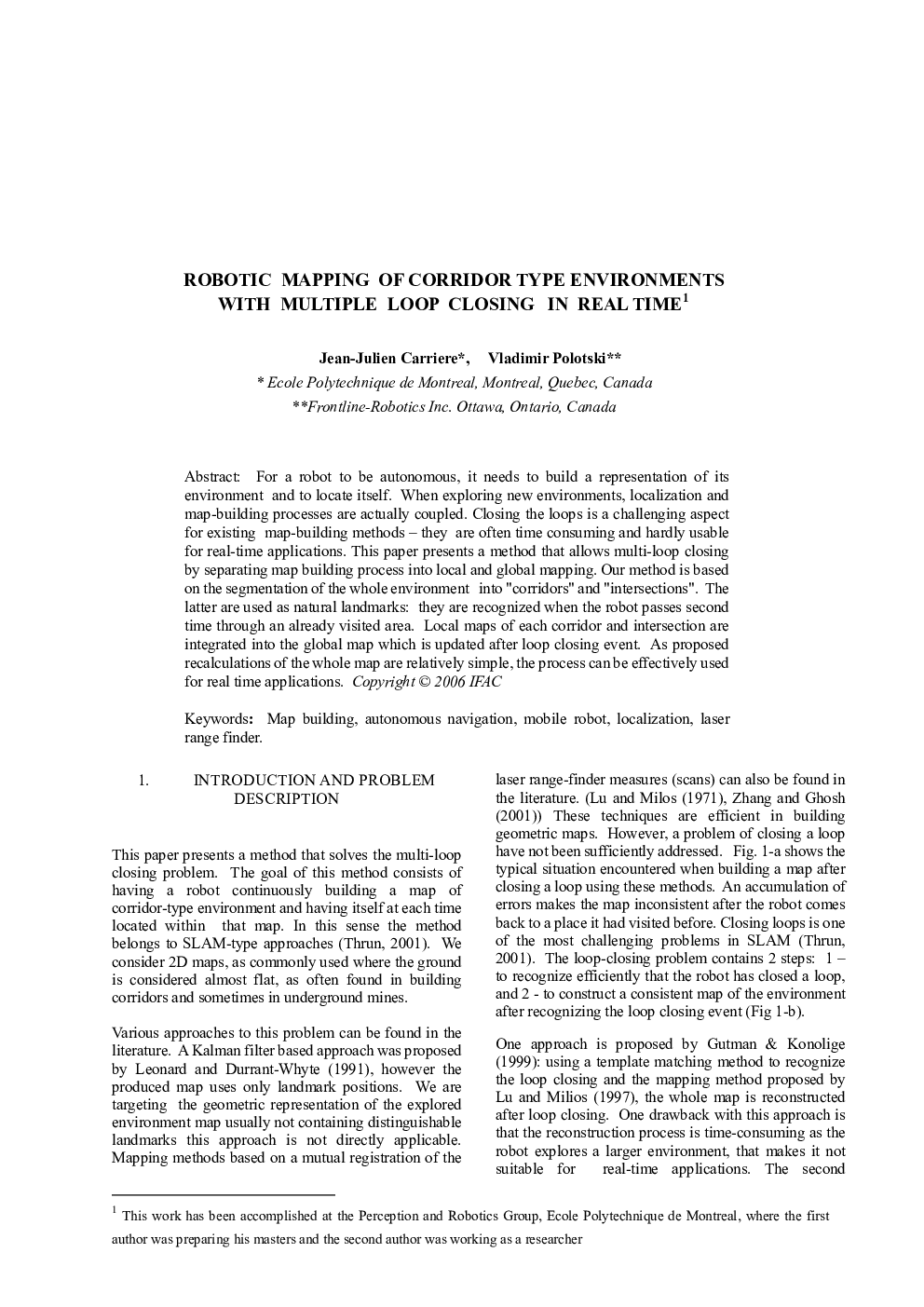| Article ID | Journal | Published Year | Pages | File Type |
|---|---|---|---|---|
| 712561 | IFAC Proceedings Volumes | 2006 | 6 Pages |
For a robot to be autonomous, it needs to build a representation of its environment and to locate itself. When exploring new environments, localization and map-building processes are actually coupled. Closing the loops is a challenging aspect for existing map-building methods — they are often time consuming and hardly usable for real-time applications. This paper presents a method that allows multi-loop closing by separating map building process into local and global mapping. Our method is based on the segmentation of the whole environment into “corridors” and “intersections”. The latter are used as natural landmarks: they are recognized when the robot passes second time through an already visited area. Local maps of each corridor and intersection are integrated into the global map which is updated after loop closing event. As proposed recalculations of the whole map are relatively simple, the process can be effectively used for real time applications.
